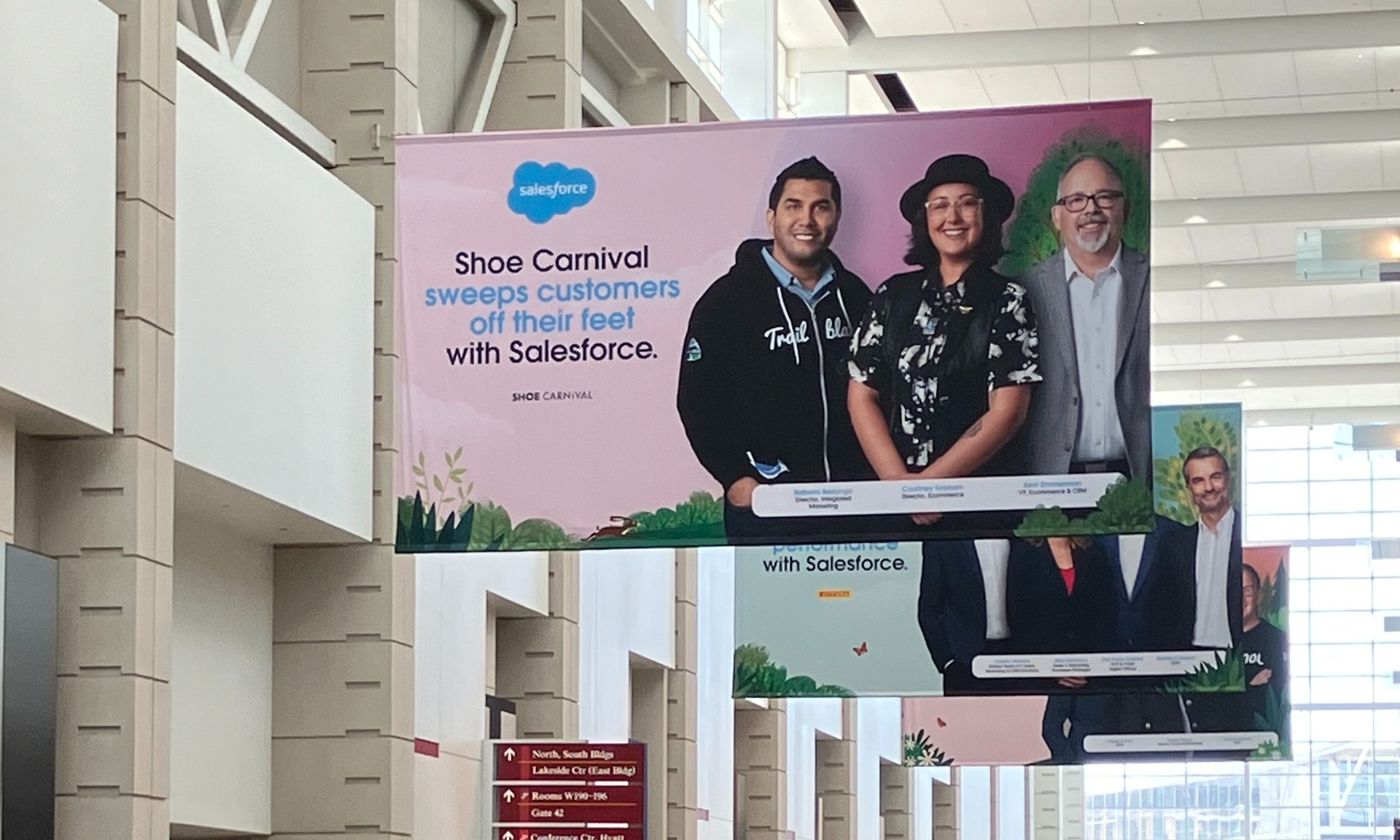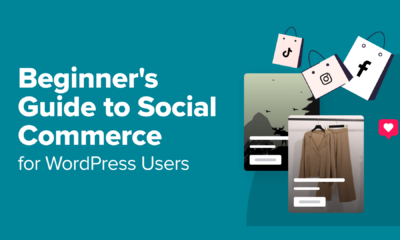MARKETING
The Ultimate Guide to Content Marketing in 2022

Your customers, leads, and audience members want valuable content from your business. And that content needs to reach audience members in a way that feels natural and organic versus being disruptive. Content marketing helps businesses do this, and it describes the process of attracting, engaging with, and delighting your target markets.
By honing in on effective content marketing, you can do just that — and as a result, increase conversions, improve brand awareness, boost revenue, establish yourself as an industry leader, and more.
Whether you’re just starting to devise a strategy or you’re refreshing your existing one, it never hurts to re-assess your process and come up with new ways to create and share the content your audiences want. In this guide, we’ll give you a birds-eye-view of content marketing, types of content marketing, content marketing examples, and how to get a strategy going.
Content Marketing
The definition of content marketing is simple: It’s the process of publishing written and visual material online with the purpose of attracting more leads to your business. These can include blog posts, pages, ebooks, infographics, videos, and more.
However, content marketing is not just publishing a thin piece of content and hoping people will find it. It’s about purposefully tailoring your pages, videos, ebooks, and posts to your target audience so that they find you the inbound way rather than the outbound way.
Today, outbound marketing strategies (or anything that interrupts your audience members) aren’t as effective at resonating with and converting audience members as they once were.
Today, your content needs to reach your audience in a way that feels natural (a.k.a. inbound). A common way of doing this is by creating a narrative for your content — or telling a story. In doing so, your content will feel more authentic, engaging, and tailored to your audience.
So, what defines content marketing anyway?
What is content marketing?
Content marketing is the process of planning, creating, distributing, sharing, and publishing content via channels such as social media, blogs, websites, podcasts, apps, press releases, print publications, and more. The goal is to reach your target audience and increase brand awareness, sales, engagement, and loyalty.
Why is content marketing important?
- Educate your leads and prospects about the products and services you offer
- Boost conversions
- Build relationships between your customers and business that result in increased loyalty
- Show your audience how your products and services solve their challenges
- Create a sense of community around your brand
Now let’s look at the various types of content marketing.
Types of Content Marketing
There are many types of content marketing that you may choose to incorporate in your strategy — here are some of the most common:
1. Online Content Marketing

Online content marketing refers to any material you publish online, but more specifically, it refers to your web pages. A strong online content marketing strategy will help you rank higher in the search engine results pages (SERPs) and get you in front of the right people at the right time.
HubSpot’s home page is one example, immediately engaging visitors with specific content about our products.
2. Social Media Content Marketing
With over 4.2 billion global social media users, it’s easy to understand why so many businesses invest in social media marketing. There are a number of platforms (e.g. Facebook, Instagram, Pinterest, LinkedIn, Snapchat) to work with and several ways you can create and share content on each of them (e.g. photos, live videos, pre-recorded videos, stories).
Featured Resource: Social Media Content Calendar
3. Infographic Content Marketing
Infographics display content, information, and data in an easy-to-understand, graphic format. With a mix of simple wording, short statements, and clear images, infographics are a great way to effectively communicate your content. They work well if you’re trying to distill an educational and/ or complex topic down so all audience members can understand it.
Featured Resource: 15 Free Infographic Templates
4. Blog Content Marketing
Blogs are a powerful type of inbound content and allow for a lot of creativity in terms of their purpose and topic. With a blog, you can do things like promote other internal and external content and blog articles via links, add social share buttons, and incorporate product information.
Featured Resource:Start a Successful Blog
5. Podcast Content Marketing
More than 60 million people listen to podcasts across the Spotify and Apple Podcasts platforms. For this reason, many businesses and media outlets have begun creating and sharing their own podcasts.
Podcasts allow for a lot of creativity as they can be about any topic of choice. Additionally, you determine other factors related to the podcast such as cadence of episodes, who’s on the podcast, where you advertise the podcast, and how long episodes are.
Featured Resource: How to Start a Podcast
6. Video Content Marketing
According to Wyzowl research, 73% of consumers say they prefer to learn about a brand’s product or service through video. Additionally, video marketing can boost conversions, improve ROI, and help you build relationships with audience members. You may choose to share your video content on social media platforms, landing pages, or on a co-marketer’s website.
Featured Resource: The Ultimate Video Marketing Starter Pack
6. Paid Ad Content Marketing
Paid ads can help you reach a broad audience and allow you to position yourself in all of the places you want to be seen — paid ads are especially beneficial when paired with inbound marketing. There are many places you can share paid ads including on social media, landing pages, banners, and sponsored content.
Featured Resource: The Ultimate Google Ads PPC Kit
Next, let’s look at some content marketing examples that are associated with those types of content marketing we just reviewed.
Content Marketing Examples
The following examples will give you a better understanding of how you can incorporate content in your greater marketing strategy.
1. Example of Instagram Content Marketing

Lush Cosmetics’ Instagram account is on-brand and complements the rest of their marketing content — if the page didn’t say “Lush Cosmetics” anywhere on the profile, customers would likely still know the profile belongs to Lush.
The Instagram page shares the Lush product line, displays different color and scent options for the products, and shows the various ways each product can be used. The profile feels and looks colorful and uniquely Lush, and depicts members of their wide customer base.
2. Example of Infographic Content Marketing

IBM created an infographic when they launched their Cloud marketplace. Their infographic is on-brand, well-organized, and easy to read. It clearly explains what they’re doing with their Cloud marketplace and how customers can benefit from it. It also tells audience members how they can access the marketplace and get started using it.
3. Example of Blog Content Marketing

Expedia has a blog called “[Out There Starts Here]” that shares travel-related information including hotel recommendations, great places to visit, and travel-related activities you can take part in around the globe.
Expedia regularly publishes their blog content to keep readers interested and engaged. It includes a wide range of topics related to any type of trip you could imagine.
The blog is on-brand and all articles relate to the travel technology company’s goal and mission of gaining customers and boosting brand awareness. They do this by linking to their services and writing about customers who have already had positive experiences with the company.
4. Example of Podcast Content Marketing

Harvard Business Review (HBR) has a weekly podcast called HBR IdeaCast which features industry leaders in both business and management. You can either subscribe to consistently receive their hundreds of podcasts or pick and choose which ones you want to listen to.
The podcast is on-brand and complements the rest of HBRs published content. It also serves as a great way for HBR to connect with their target audience, enhance brand awareness, and gain a following of audience members through a medium that differs from their typical work (e.g. podcast versus HBR article).
5. Example of Video Content Marketing
Much of Dollar Shave Club’s video content has gone viral. Their marketing efforts are on-brand, humorous, and entertaining. By establishing a name for themselves via online video content, Dollar Shave Club has experienced impressive growth and brand recognition.
6. Example of Paid Ad Content Marketing

Revolve — a clothing and accessories company — uses paid and sponsored ads on social media (like this one on Facebook) to reach their target audience while they browse their news feeds.
The content ads feature some of their products as well as details about their free shipping and return policy to drive target audience members to their site (and, hopefully, convert them into paying customers).
Lastly, let’s cover your content marketing strategy. By implementing a strategy, your content marketing efforts will be impactful and effective in converting leads and reaching your target audience.
7. Example of Twitter Content Marketing

HubSpot uses Twitter to market software as well as create a community among customers, target audience members, and industry leaders and experts.
HubSpot shared product information, relevant tips, industry knowledge, and original research on Twitter. HubSpot also interacts with users and ensures anyone in need of customer support knows exactly where to go for help.
8. Example of TikTok Content Marketing

Chipotle is a very active brand on TikTok — the company uses the platform to reach and engage their customers and target audience members. In addition to reacting to others’ Chipotle-related TikTok content, the brand posts TikToks of their menu items, recipes, people enjoying their food, their restaurants, and more. They have over 1.6 million followers and over 30 million likes.
9. Example of Viral Content Marketing
This viral content marketing example was one that came from a TikTok video — Nathan Apodaca’s original TikTok video included him sipping Ocean Spray cranberry juice while skateboarding and listening to “Dreams” by Fleetwood Mac.
As a result of the viral video, TikTok used part of Apodaca’s video in their ads, Ocean Spray used Apodaca in their ads, Ocean Spray saw a bump in sales and brand awareness, Fleetwood Mac’s “Dreams” was number one on iTunes, and there were thousands of videos posted by other TikTok users who bought the cranberry juice and recreated Apodaca’s original video.
Content Marketing Strategy
- Set SMART goals.
- Determine your KPIs.
- Choose your content channels.
- Decide on the type of content.
- Set a budget.
- Create and distribute the content.
- Analyze and measure results.
You can think about your content marketing strategy as you would your content marketing plan — let’s dive into the steps you’ll want to work through in order to develop an effective strategy.
1. Set SMART goals.
The first part of your content marketing strategy is to set SMART goals. These should be specific to your business — they’ll likely complement your broader marketing and company goals.
Here are some SMART goal examples:
- Improve brand awareness
- Boost revenue
- Increase conversions
- Improve brand loyalty
- Increase customer engagement
- Build rapport and trust among prospects and customers
- Attract strategic partners
2. Determine your KPIs.
Next, set key performance indicators (KPIs) for your SMART goals. KPIs are quantifiable data points you can use to measure your actual performance against your goal.
| smart goal | related kpi |
| Brand awareness | Site traffic, social media followers, subscription sign-ups, mentions (by customers and partners) |
| Revenue | Daily sales, site traffic |
| Conversions | Conversion rate, shopping cart abandonment rate, associated shipping rate trends, competitive price trends |
| Brand loyalty | Returning customers, promoters, product reviews, referrals |
| Customer engagement | Likes, shares, follows, mentions, backlinks |
| Rapport and trust | Returning customers, promoters, followers, mentions |
| Strategic partners | New partnerships, mentions, backlinks |
3. Decide on the type of content.
Next, choose the type of content you’ll create. To do this, start by thinking about your target audience and buyer personas.
Answer the following questions about your target audience to help you narrow down the right types of content for them:
- What do they need from you?
- What challenges are they looking to overcome?
- Why do they need your product or service?
- How can you help them succeed?
- Where do they spend their time?
Then, take a look back at the various types of content we reviewed earlier to decide which types of content you’ll create.
4. Choose your content channels.
Once you’ve decided on the type of content you’ll market with, it’s time to choose your specific content channels. Where will you share your content? Where will it live and be shared from?
For some of the content types, the channel you need to work with will be obvious. For example, if you’re creating Facebook content, your channel will be the social platform itself.
5. Set a budget.
Now, set your budget. Think about the type of content you’re creating and which channels you’re marketing that content on.
Then, ask yourself the following questions to determine your budget:
- Do you need to purchase any software or technology to create the content (such as graphic design software like Adobe Photoshop, a subscription to Canva, a camera to take high-quality photos and videos)?
- Do you need to hire any content marketers or designers (such as artists, writers, editors, designers)?
- Do you need to pay for ad space?
- Do you need access to specific tools or resources to enhance or measure your specific type of content?
Make note of how your responses impact your budget — whether that’s an increase or decrease in what you may have already estimated.
6. Create and distribute the content.
Create and distribute your content so your audience members can consume it — and possibly convert. To ensure you’re consistently producing content and sharing it among your prospects and customers, use a social media calendar or an editorial content calendar.
This will help your team stay on top of all of the content being created as well as allow you to schedule it ahead of time.
7. Analyze and measure results.
Lastly, analyze and measure your results so you can make any necessary changes to enhance your content marketing efforts and reach more audience members.
Look at your SMART goals and KPIs to determine the success of your content marketing strategy. Did you achieve your goals and KPIs? Were you close to reaching them, or were you off in your estimations?
Here are some tools to help you with your content marketing strategy analytics and results:
Now, how can you ensure your strategy will be effective? Let’s find out.
Traits of Effective Content Marketing
With so many companies creating and publishing content online, it’s essential to go beyond your standard industry fare. A secret? HubSpot strives to meet the following criteria to ensure all of our content meets your and other readers’ needs. The result? Millions of visits to our blog posts and web pages per month.
You can achieve similar results for your company if your content:
1. Provides value beyond your product offerings.
Content marketing isn’t just about sharing your products’ virtues to get readers to become a customer. It’s important to provide value that empowers your customers to do something more efficiently, such as making their businesses more profitable or shortening their morning routine.
Whatever the case may be, strive to create content that provides a solution for your customer’s most urgent needs. Your product may be a solution, but if you’re not explicitly writing a product page, you should only incorporate product mentions if they make sense.
In the blog post below, hair care brand Curlsmith helps readers understand how to reach the right balance between high-protein and high-moisture products. It doesn’t mention its products until the very end, instead educating the reader first.

2. Targets readers’ specific buying journey stage.
Providing value and answering customer’s needs is only a part of the story. In each piece of content, you should also target your customers’ specific buyer’s journey stage.
Generally, there are three stages of the buyer’s journey: Awareness, consideration, and decision. In the awareness stage, buyers are still researching their issue. In the consideration stage, they’re researching solutions. In the decision stage, they’re about to pick a provider.
If you’re writing a “What is [X]?” post, then the person who’s reading that article is likely not ready to make a decision about their provider. They are still in the awareness stage, completing research so that they can find out who offers a solution.
Conversely, if you’re writing a product page, then the reader who visits that page has already researched potential products and found you as a possible provider. That means you should pitch your product at every turn, reiterating your value proposition and differentiating yourself from the competition. You shouldn’t be shy about your products’ most valuable features.
3. Demonstrates a consistent brand voice and image.

No matter if you’re creating a blog post, web page, or ebook, your visitors should be able to tell who you are immediately upon consuming your content. Your brand shouldn’t sound as if ten different people are writing for you, even if that may be the case.
That’s why it’s critical to create both a writing style guide and a brand style guide. Both of these documents will ensure that:
- Your brand visuals look the same across all platforms and devices.
- Your brand tone and voice sounds the same across all written communications.
Once you create both of these, disseminate them to both your content writers and your freelance or in-house designers. Your content marketing publications will be much more cohesive and consistent, which will keep readers coming back to you as a resource and make you look more polished and professional.
4. Is timely and engaging.
Do your customers typically plan their financials at the start of the year? If you’re a finance startup, you might publish a blog post in January about budgeting quarter-over-quarter to prevent clerical errors and avoid overspending.
At the end of the post, you might include a prompt to check out your software, or lead users to a template they can download after providing their email.
This is one example of content marketing that is timely and engaging. If you know your customer’s behavioral and spending patterns throughout the year, it’s critical to capitalize on that. Publish blog posts and offers that capture them at the right time and answers their immediate needs. You’ll be ahead of the companies that publish similar content later on — and oftentimes, being first is all you need to win a customer over.
Now that we’ve seen the top traits of effective content marketing, let’s dive into the best resources you can use to learn more about it.
Best Content Marketing Resources
- HubSpot Academy for free education on how to become an effective content marketer.
- HubSpot’s Free Content Creation Resources for access to resources that will propel your content marketing strategy towards success.
- Content Marketing Institute for access to some of the best content marketing online education, print, and events available today.
- Blog articles on content marketing, trends, strategies, and tips by industry experts.
- Podcasts about content marketing, such as This Old Marketing, or business trends, such as HBR IdeaCast, to inspire your content marketing strategy.
- Google Trends, which allows you to search for trends across broad topics like content marketing or for niche topics within content marketing.
- Ebooks and case studies about content marketing and specific content marketing strategies.
- Latest content marketing statistics by a reputable database source like Statista.
- Easy to use visual content and design software, such as Canva.
- Free or paid social media management tools, such as HubSpot, Buffer, or Sprout Social, to help you create and share your social content.
- Free or paid content and project management tools, like Trello or Asana, to plan and organize your content marketing strategy.
- Free or paid marketing software to connect your content marketing team, plan, strategy, and results to your greater marketing plan (and even your CRM).
- Free or paid email marketing software, like HubSpot or Mailchimp, to handle all aspects of your email campaigns and content.
- Your network, on platforms like Twitter or LinkedIn, where you can connect with those in your industry to discuss relevant trends, answer each other’s questions, and provide or ask for feedback.
There are hundreds of thousands of tools available today that qualify as excellent content marketing resources. For the sake of this article, we’re going to keep things simple by providing a handful of our favorite options today.
- HubSpot Academy for free education on how to become an effective content marketer.
- HubSpot’s Free Content Creation Resources for access to resources that will propel your content marketing strategy towards success.
- Content Marketing Institute for access to some of the best content marketing online education, print, and events available today.
- Blog articles on content marketing, trends, strategies, and tips by industry experts (like HubSpot).
- Podcasts about content marketing, such as This Old Marketing, or business trends, such as HBR IdeaCast, to inspire your content marketing strategy.
- Google Trends, which allows you to search for trends across broad topics like content marketing or for niche topics within content marketing.
- Ebooks and case studies about content marketing or content marketing strategies, like this one by Mention.
- Latest content marketing statistics by a reputable database source like Statista.
- Easy to use visual content and design software, such as Canva.
- Free or paid social media management tools, such as HubSpot, Buffer, or Sprout Social, to help you create and share your social content.
- Free or paid content and project management tools, like Trello or Asana, to plan and organize your content marketing strategy.
- Free or paid marketing software to connect your content marketing team, plan, strategy, and results to your greater marketing plan (and even your CRM).
- Free or paid email marketing software, like HubSpot or Mailchimp, to handle all aspects of your email campaigns and content.
- Your network, on platforms like Twitter or LinkedIn, where you can connect with those in your industry to discuss relevant trends, answer each other’s questions, and provide or ask for feedback.
And speaking of tapping into your networks on sites like Twitter and LinkedIn, here’s some inspiration from a few of the greatest content marketers to follow on both platforms today.
Best Content Marketers to Follow on LinkedIn and Twitter
- Luvvie Ajayi Jones
- Zontee Hou
- A. Lee Judge
- Ann Handley
- Neil Patel
- Guy Kawasaki
3 Marketers to Follow on LinkedIn
1. LinkedIn: Luvvie Ajayi Jones
Luvvie Ajayi Jones is a best-selling author, digital strategist, podcast host, and speaker. She’s known for combining humor with her experiences and background in marketing, communications, and new media. Her LinkedIn is sure to inspire you whether you’re thinking about/working on culture, authenticity, leadership, content, marketing strategy, and more.
2. Zontee Hou

Zontee Hou is a digital marketer and strategist, speaker, and consultant. She works with scaling companies to help them establish effective marketing strategies that work for their unique goals and audiences. On her LinkedIn profile, Hou shares her expertise in content marketing, social media marketing, marketing analytics, and digital marketing.
3. A. Lee Judge

A. Lee Judge is a co-founder and digital marketing strategist at Content Monsta. He’s also a podcast and video producer, speaker, and rev ops practitioner. On his LinkedIn profile, he covers a wide range of topics related to lead generation, social media marketing, how to apply marketing analytics and data, digital experiences, multi-channel marketing, the importance of sales and marketing alignment, and more.
3 Marketers to Follow on Twitter
4. Ann Handley

Ann Handley, Head of Content at MarketingProfs, is a bestselling author and speaker. She provides education and training around marketing that businesses can learn from and apply. She offers in-person and virtual trainings for companies on content marketing, storytelling, lead generation, and branding – all of which are topics she alson talks about, and shares content about, on her Twitter page.
5. Neil Patel

Neil Patel is a bestselling author, marketing expert, speaker, and website and SEO consultant. He’s a thought leader and industry expert in content and digital marketing. His Twitter page includes information about his trainings and services, industry trends, marketing strategy tips and resources, and questions/conversational topics meant to engage followers and other industry experts.
6. Guy Kawasaki

Guy Kawasaki is a marketing strategist, author, entrepreneur, venture capitalist, podcast host, and the chief evangelist of Canva. On his Twitter account, Kawasaki asks followers thought-provoking business questions as well as provides links to, and information about, new podcast episodes, industry trends, marketing strategy tips, and insights based on his experiences.
Engage Your Target Audience With Content Marketing
With effective content marketing, you can reach your target audience and increase conversions. There are several ways to market with content to boost revenue, grow your brand awareness and recognition, and build relationships with your prospects and customers.
And don’t forget to extract more value from every piece of content you create.
To get started, determine which type of content works best for your business and audience, and develop a content marketing strategy to begin boosting your bottom line today.
Editor’s note: This post was originally published in August, 2019 and has been updated for comprehensiveness.
MARKETING
YouTube Ad Specs, Sizes, and Examples [2024 Update]
![YouTube Ad Specs, Sizes, and Examples [2024 Update] YouTube Ad Specs, Sizes, and Examples](https://articles.entireweb.com/wp-content/uploads/2024/06/YouTube-Ad-Specs-Sizes-and-Examples.jpg)
Introduction
With billions of users each month, YouTube is the world’s second largest search engine and top website for video content. This makes it a great place for advertising. To succeed, advertisers need to follow the correct YouTube ad specifications. These rules help your ad reach more viewers, increasing the chance of gaining new customers and boosting brand awareness.
Types of YouTube Ads
Video Ads
- Description: These play before, during, or after a YouTube video on computers or mobile devices.
- Types:
- In-stream ads: Can be skippable or non-skippable.
- Bumper ads: Non-skippable, short ads that play before, during, or after a video.
Display Ads
- Description: These appear in different spots on YouTube and usually use text or static images.
- Note: YouTube does not support display image ads directly on its app, but these can be targeted to YouTube.com through Google Display Network (GDN).
Companion Banners
- Description: Appears to the right of the YouTube player on desktop.
- Requirement: Must be purchased alongside In-stream ads, Bumper ads, or In-feed ads.
In-feed Ads
- Description: Resemble videos with images, headlines, and text. They link to a public or unlisted YouTube video.
Outstream Ads
- Description: Mobile-only video ads that play outside of YouTube, on websites and apps within the Google video partner network.
Masthead Ads
- Description: Premium, high-visibility banner ads displayed at the top of the YouTube homepage for both desktop and mobile users.
YouTube Ad Specs by Type
Skippable In-stream Video Ads
- Placement: Before, during, or after a YouTube video.
- Resolution:
- Horizontal: 1920 x 1080px
- Vertical: 1080 x 1920px
- Square: 1080 x 1080px
- Aspect Ratio:
- Horizontal: 16:9
- Vertical: 9:16
- Square: 1:1
- Length:
- Awareness: 15-20 seconds
- Consideration: 2-3 minutes
- Action: 15-20 seconds
Non-skippable In-stream Video Ads
- Description: Must be watched completely before the main video.
- Length: 15 seconds (or 20 seconds in certain markets).
- Resolution:
- Horizontal: 1920 x 1080px
- Vertical: 1080 x 1920px
- Square: 1080 x 1080px
- Aspect Ratio:
- Horizontal: 16:9
- Vertical: 9:16
- Square: 1:1
Bumper Ads
- Length: Maximum 6 seconds.
- File Format: MP4, Quicktime, AVI, ASF, Windows Media, or MPEG.
- Resolution:
- Horizontal: 640 x 360px
- Vertical: 480 x 360px
In-feed Ads
- Description: Show alongside YouTube content, like search results or the Home feed.
- Resolution:
- Horizontal: 1920 x 1080px
- Vertical: 1080 x 1920px
- Square: 1080 x 1080px
- Aspect Ratio:
- Horizontal: 16:9
- Square: 1:1
- Length:
- Awareness: 15-20 seconds
- Consideration: 2-3 minutes
- Headline/Description:
- Headline: Up to 2 lines, 40 characters per line
- Description: Up to 2 lines, 35 characters per line
Display Ads
- Description: Static images or animated media that appear on YouTube next to video suggestions, in search results, or on the homepage.
- Image Size: 300×60 pixels.
- File Type: GIF, JPG, PNG.
- File Size: Max 150KB.
- Max Animation Length: 30 seconds.
Outstream Ads
- Description: Mobile-only video ads that appear on websites and apps within the Google video partner network, not on YouTube itself.
- Logo Specs:
- Square: 1:1 (200 x 200px).
- File Type: JPG, GIF, PNG.
- Max Size: 200KB.
Masthead Ads
- Description: High-visibility ads at the top of the YouTube homepage.
- Resolution: 1920 x 1080 or higher.
- File Type: JPG or PNG (without transparency).
Conclusion
YouTube offers a variety of ad formats to reach audiences effectively in 2024. Whether you want to build brand awareness, drive conversions, or target specific demographics, YouTube provides a dynamic platform for your advertising needs. Always follow Google’s advertising policies and the technical ad specs to ensure your ads perform their best. Ready to start using YouTube ads? Contact us today to get started!
MARKETING
Why We Are Always ‘Clicking to Buy’, According to Psychologists

Amazon pillows.
MARKETING
A deeper dive into data, personalization and Copilots

Salesforce launched a collection of new, generative AI-related products at Connections in Chicago this week. They included new Einstein Copilots for marketers and merchants and Einstein Personalization.
To better understand, not only the potential impact of the new products, but the evolving Salesforce architecture, we sat down with Bobby Jania, CMO, Marketing Cloud.
Dig deeper: Salesforce piles on the Einstein Copilots
Salesforce’s evolving architecture
It’s hard to deny that Salesforce likes coming up with new names for platforms and products (what happened to Customer 360?) and this can sometimes make the observer wonder if something is brand new, or old but with a brand new name. In particular, what exactly is Einstein 1 and how is it related to Salesforce Data Cloud?
“Data Cloud is built on the Einstein 1 platform,” Jania explained. “The Einstein 1 platform is our entire Salesforce platform and that includes products like Sales Cloud, Service Cloud — that it includes the original idea of Salesforce not just being in the cloud, but being multi-tenancy.”
Data Cloud — not an acquisition, of course — was built natively on that platform. It was the first product built on Hyperforce, Salesforce’s new cloud infrastructure architecture. “Since Data Cloud was on what we now call the Einstein 1 platform from Day One, it has always natively connected to, and been able to read anything in Sales Cloud, Service Cloud [and so on]. On top of that, we can now bring in, not only structured but unstructured data.”
That’s a significant progression from the position, several years ago, when Salesforce had stitched together a platform around various acquisitions (ExactTarget, for example) that didn’t necessarily talk to each other.
“At times, what we would do is have a kind of behind-the-scenes flow where data from one product could be moved into another product,” said Jania, “but in many of those cases the data would then be in both, whereas now the data is in Data Cloud. Tableau will run natively off Data Cloud; Commerce Cloud, Service Cloud, Marketing Cloud — they’re all going to the same operational customer profile.” They’re not copying the data from Data Cloud, Jania confirmed.
Another thing to know is tit’s possible for Salesforce customers to import their own datasets into Data Cloud. “We wanted to create a federated data model,” said Jania. “If you’re using Snowflake, for example, we more or less virtually sit on your data lake. The value we add is that we will look at all your data and help you form these operational customer profiles.”
Let’s learn more about Einstein Copilot
“Copilot means that I have an assistant with me in the tool where I need to be working that contextually knows what I am trying to do and helps me at every step of the process,” Jania said.
For marketers, this might begin with a campaign brief developed with Copilot’s assistance, the identification of an audience based on the brief, and then the development of email or other content. “What’s really cool is the idea of Einstein Studio where our customers will create actions [for Copilot] that we hadn’t even thought about.”
Here’s a key insight (back to nomenclature). We reported on Copilot for markets, Copilot for merchants, Copilot for shoppers. It turns out, however, that there is just one Copilot, Einstein Copilot, and these are use cases. “There’s just one Copilot, we just add these for a little clarity; we’re going to talk about marketing use cases, about shoppers’ use cases. These are actions for the marketing use cases we built out of the box; you can build your own.”
It’s surely going to take a little time for marketers to learn to work easily with Copilot. “There’s always time for adoption,” Jania agreed. “What is directly connected with this is, this is my ninth Connections and this one has the most hands-on training that I’ve seen since 2014 — and a lot of that is getting people using Data Cloud, using these tools rather than just being given a demo.”
What’s new about Einstein Personalization
Salesforce Einstein has been around since 2016 and many of the use cases seem to have involved personalization in various forms. What’s new?
“Einstein Personalization is a real-time decision engine and it’s going to choose next-best-action, next-best-offer. What is new is that it’s a service now that runs natively on top of Data Cloud.” A lot of real-time decision engines need their own set of data that might actually be a subset of data. “Einstein Personalization is going to look holistically at a customer and recommend a next-best-action that could be natively surfaced in Service Cloud, Sales Cloud or Marketing Cloud.”
Finally, trust
One feature of the presentations at Connections was the reassurance that, although public LLMs like ChatGPT could be selected for application to customer data, none of that data would be retained by the LLMs. Is this just a matter of written agreements? No, not just that, said Jania.
“In the Einstein Trust Layer, all of the data, when it connects to an LLM, runs through our gateway. If there was a prompt that had personally identifiable information — a credit card number, an email address — at a mimum, all that is stripped out. The LLMs do not store the output; we store the output for auditing back in Salesforce. Any output that comes back through our gateway is logged in our system; it runs through a toxicity model; and only at the end do we put PII data back into the answer. There are real pieces beyond a handshake that this data is safe.”
-

 SEO7 days ago
SEO7 days agoGoogle’s Revamped Documentation Shows 4 Reasons To Refresh Content
-
SEARCHENGINES5 days ago
Daily Search Forum Recap: August 26, 2024
-

 SEARCHENGINES7 days ago
SEARCHENGINES7 days agoGoogle Ranking Bug Fixed, August Core Update Swings, AI Overviews, Google Ads Bug & More
-
SEARCHENGINES4 days ago
Daily Search Forum Recap: August 27, 2024
-

 WORDPRESS7 days ago
WORDPRESS7 days agoHow to Secure Your WordPress Store
-

 AFFILIATE MARKETING7 days ago
AFFILIATE MARKETING7 days agoBusiness Owners are Batting 1,000 With This All-in-One Management Hub
-

 SEARCHENGINES6 days ago
SEARCHENGINES6 days agoGoogle Migrating All To Google Merchant Center Next By September
-

 WORDPRESS5 days ago
WORDPRESS5 days ago10 Best StudioPress Alternatives (Genesis Framework)
















You must be logged in to post a comment Login